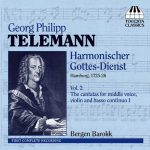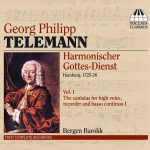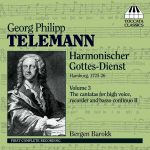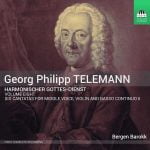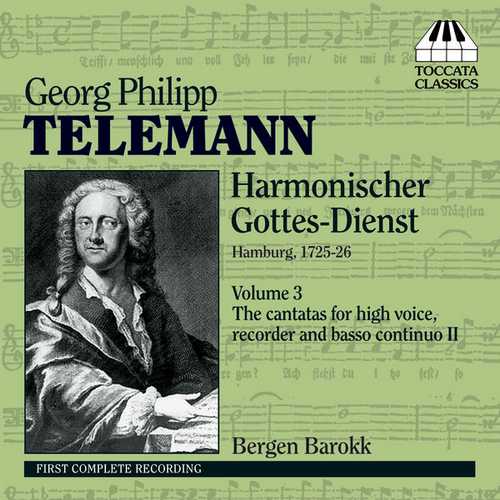
Composer: Georg Philipp Telemann
Performer: Bergen Baroque, Franz Vitzthum, Bjarte Eike, Markku Luolajan-Mikkola, Hans Knut Sveen
Format: FLAC (tracks)
Label: Toccata Classics
Catalogue: TOCC0057
Release: 2009
Size: 331 MB
Recovery: +3%
Scan: yes
Deine Toten werden leben, TVWV 1: 213
01. Aria: Deine Toten werden leben
02. Recitative: So scheut das Sterben weiter nicht
03. Aria: Ihr Sterblichen!
Wer sehnet sich nach Kerker, Stein und Kette, TWV 1:1594
04. Aria: Wer sehnet sich nach Kerker
05. Recitative: Ein Christ muss sich der Sorge billig schamen
06. Aria: Nein, nein, du wirst mich nicht versaumen
Wenn Israel am Nilusstrande, TWV 1:1562
07. Recitative: Wenn Israel am Nilusstrande die schwersten Ziegel dulden muss
08. Aria: Meidet diese Sklaverei!
09. Recitative: Zu diesem Meiden zu diesem Fliehen
10. Aria: Monarch der ganzen Kreatur!
Durchsuche dich, o stolzer Geist, TWV 1:399
11. Aria: Durchsuche dich, O stolzer Geist
12. Recitative: Ach, welcher sich
13. Aria: Herr der Gnade, Gott des Lichts
Trifft menschlich und voll Fehler sein meiste Zeit zusammen, TVWV 1:1417
14. Recitative: Trifft menschlich und voll Fehler sein
15. Aria: Durch Glut und Schlag ist Eisen zwar zu beugen
16. Recitative: Gott selbst verfahrt zuerst gelinde
17. Aria: Gleich dem Balsam sind die Lehren
Es ist ein schlechter Ruhm, TWV 1:506
18. Recitative: Es ist ein schlechter Ruhm
19. Aria: Vergnugst du dich an Heidenlusten
20. Recitative: Wie ist der Stolz der Sterblichen so blind!
21. Aria: Zu guter Nacht, ihr alten Sunden!
Locke nur, Erde, mit schmeichelndem Reize, TVWV 1: 1069
22. Aria: Locke nur, Erde, mit schmeichelndem Reize
23. Recitative: Verstummet nur, verkehrte Lehrer
24. Aria: Verlass den Bau der ird’schen Hutte
This is the third volume in the highly acclaimed first complete set of recordings of the 72 cantatas from Harmonischer Gottes-Dienst, published in Hamburg in 1726.
The Harmonischer Gottes-Dienst was the first complete set of cantatas for the liturgical year ever to be published, and copies were to be found across Germany. J. S. Bach’s nephew wrote in 1758 that Telemann’s church music ‘is by now so much appreciated that there cannot be many Protestant churches in Germany where they do not perform Telemann’s annual cantata series’.
The cantatas are designed for voice, an obbligato instrument (recorder, violin, transverse flute or oboe) and basso continuo in the form of two da capo arias with an intervening recitative, and show a masterly blend of tunefulness with skilled counterpoint and vocal/instrumental virtuosity.
The reduced forces would have made them useful for performance at home as well as in church. In the churches of Telemann’s day the usual performance practice was to perform one cantata before the sermon and another one afterwards, and occasionally musicians even had to rush from church to church during the sermons, in order to meet the requirements of specific instrumentations.
Telemann also had private worship in mind when he wrote them, stating in the preface that the music is ‘more meant for private use and for domestic rather than church worship’.
